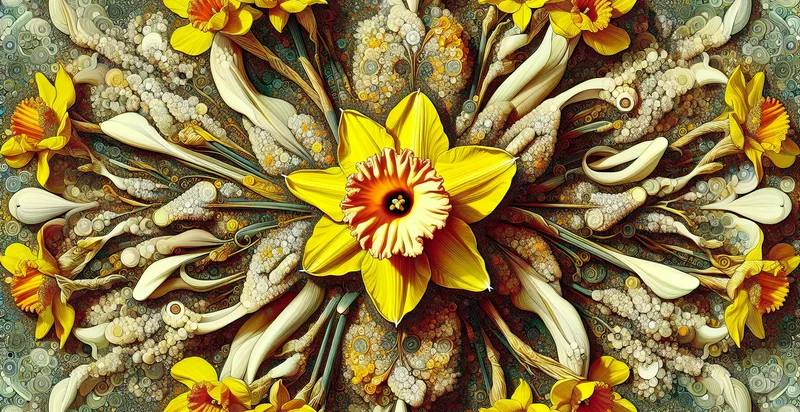Identify daffodil species
using AI
Below is a free classifier to identify daffodil species. Just upload your image, and our AI will predict what species of daffodil it is - in just seconds.

Contact us for API access
Or, use Nyckel to build highly-accurate custom classifiers in just minutes. No PhD required.
Get started
import nyckel
credentials = nyckel.Credentials("YOUR_CLIENT_ID", "YOUR_CLIENT_SECRET")
nyckel.invoke("daffodil-species", "your_image_url", credentials)
fetch('https://www.nyckel.com/v1/functions/daffodil-species/invoke', {
method: 'POST',
headers: {
'Authorization': 'Bearer ' + 'YOUR_BEARER_TOKEN',
'Content-Type': 'application/json',
},
body: JSON.stringify(
{"data": "your_image_url"}
)
})
.then(response => response.json())
.then(data => console.log(data));
curl -X POST \
-H "Content-Type: application/json" \
-H "Authorization: Bearer YOUR_BEARER_TOKEN" \
-d '{"data": "your_image_url"}' \
https://www.nyckel.com/v1/functions/daffodil-species/invoke
How this classifier works
To start, upload your image. Our AI tool will then predict what species of daffodil it is.
This pretrained image model uses a Nyckel-created dataset and has 20 labels, including Narcissus Albidus, Narcissus Asturiensis, Narcissus Bulbocodium, Narcissus Bulbocodium Subsp Bulbocodium, Narcissus Cyclamineus, Narcissus Incomparabilis, Narcissus Jonquilla, Narcissus Juncifolius, Narcissus Laurensia and Narcissus Longispathus.
We'll also show a confidence score (the higher the number, the more confident the AI model is around what species of daffodil it is).
Whether you're just curious or building daffodil species detection into your application, we hope our classifier proves helpful.
Related Classifiers
Need to identify daffodil species at scale?
Get API or Zapier access to this classifier for free. It's perfect for:
- Botanical Research Aid: The 'daffodil species' identifier can assist botanists and researchers in identifying various species of daffodils during field studies. This automation streamlines data collection, allowing researchers to focus on ecological interactions and conservation efforts.
- Horticulture and Landscaping Solutions: Landscape designers can utilize the image classification function to accurately select daffodil species for specific environments or aesthetic designs. This ensures that chosen plants thrive in their new locations, enhancing the overall success of the landscaping project.
- Educational Tools for Botany Students: Educational institutions can integrate the daffodil species identifier into their botany curriculum, providing students with hands-on experience in plant identification. This reinforces theoretical learning and cultivates practical skills essential for future botanists.
- Agricultural Pest Management: Farmers can leverage the image classification technology to monitor the prevalence of specific daffodil species that may be susceptible to pests or diseases. By understanding which species are present, farmers can make informed decisions about crop management and pest prevention strategies.
- Floral Retail Support: Online and physical floral retailers can use the identifier to ensure accurate labeling of daffodil species for customers. This enhances customer satisfaction by providing detailed care instructions and reliable information about the flowers they purchase.
- Gardening Community Apps: Mobile applications for gardening enthusiasts can incorporate the daffodil species identifier to help users identify and categorize different daffodil species in their gardens. This interactive feature encourages sharing and learning within the gardening community.
- Conservation and Biodiversity Monitoring: Conservation organizations can utilize the daffodil species identifier to track and study daffodil populations in their natural habitats. This data can contribute to biodiversity assessments and inform conservation strategies to protect vulnerable species.


